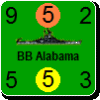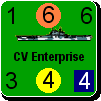rkr1958
Posts: 23483
Joined: 5/21/2009
Status: offline

|
Turn 4. Mar/Apr 1940. Summary.
This was a turn of blitzkrieg. Another turn where both I had a blast playing a game (i.e., MWiF) and felt history come alive. Again, not alive on the micro but on the macro level. What happened? Well let me tell you.
The Germans blitzed through Holland, Belgium, into France and are threatening to encircle two corps of the BEF, who at the end of the turn were out of supply but still organized. Both sides will aggressively ply for the initiative next turn so they can move first, which will make the difference between France falling or surviving another turn. And, whether or not the BEF can be saved. The German army quickly crushed Holland and then smashed into Belgium capturing the vital port of Antwerp and the fort Eben-Emael in Liege. The BEF and French army move east across the Belgium border in force and establish not only a formable front line but a defense in depth spanning the Swiss border to the North Sea. Then the German army simultaneously crushed the remnants of the Belgium, taking their capital, and breeched the Maginot line at Strasbourg. The attack on Strasbourg wasn’t without loss, Germany lost 2 garrisons and all surviving attackers were disorganized. Then Rundstedt and an ATR squadron were used to reorganized five of the attackers. This breech and reorg forced a number of French reserve forces, which who providing the second line of the defense in depth, to move south to shore up the Maginot line defenses.
When storms hit the north temperate, it looked like the turn would end with the allied defenses bent but really still holding strong. However, not only did the turn continue but the storms blew through and the weather cleared. Instead of resting, refitting and waiting for the turn to end, OKH made a bold decision. One that if successful could potentially break the backs of the French army and bag the BEF. On impulse 13, the OKH played 1 of their only 2 O-chits to reorganized von Bock, used for HQ support to the Strasbourg attack, and Rundstedt, used to reorg four of the units disorganized in that attack. Von Bock was order to gather what forces he could and attack the city of Metz, another Maginot fort hex and defended by two French corps. Rundstedt was order to gather all the panzers and launch a blitz attack out of Brussels and Antwerp against the Belgium hex directly east of Lille, which was unexplainably left unoccupied by the allies, and exploit into Lille. Both attacks were far from sure and cost Germany’s at best one of their two (nearly) irreplaceable O-chits. OKH estimated that the chance of Rundstedt’s panzers breaking through at 75% and von Bock’s chance of taking Metz at 65%. This gave an overall mission success of just under 50% (or a coin flip). One caveat, though is that these estimates assumed minimal French defensive ground support through. With 5 strong German fighters on standby against 3 weaker French fighters, this assumption seemed more than reasonable.
In war, luck goes to the brave, or often does. And, in this instance it did. Rundstedt and his panzers broke through to capture Lille and von Bock smashed through another Maginot fort hex to capture Metz. After these attacks, both Rundstedt and von Bock, who both provided HQ support to their respective attacks, were disorganized as well as all of the Luftwaffe, exhausted from all the support given throughout the entire turn, and the French air force. In great need for the allies to pull back and reform their lines against the exhausted Germans, the turn comes to an end allowing the Germans to reorganize all their forces and leaving the allies in a very precarious position if the Germans get the initiative.
While the German army was blitzing across Holland, Belgium and into France, at sea the Kriegsmarine (KM) was operating (almost) at will in the North Sea and the Atlantic. The KM in the North Sea was able to both deliver troops for an amphibious invasion of Rotterdam and provide naval gunfire for an attack on The Hague. Meanwhile in the North Atlantic, while KM raiders failed to find and sink any convoys, the RN who was operating in force was not only unable to deal adequately with the brazen KM raiders but took the brunt of an encounter with them when they managed to find them. To make matters worse the RN let these Atlantic raiders to slip by strong forces in both the Faeores Gap and North Sea to make it back safely to their base in Kiel. An then in the North Sea where strong RN forces were also operating with their French ally, the KM invasion force on the way back to Kiel and when confronted by the RN and French navy was able to isolate the French ships, sink the Battleship Strasbourg and continue on to Kiel unmolested. Ironically, it was only a few days after the French Battleship Strasbourg slipped under the waves of the North Sea from this encounter that von Bock and his forces were breaching the Maginot line and capturing the city of Strasbourg, from whom the sunken battleship was named.
Editor's note: More specifics on the key events of this turn will be provided in subsequent posts. I do realize that my play is deviating from the historical record, but I’m trying to both play MWiF with an eye towards this record and with sound game strategy and tactics. I understand that both points could rightfully be argued to the contrary, and I encourage those whom wish to voice such arguments to do so, but after all MWiF if a game and one that I’m really enjoining right now.
A second, and most vital, point I wish to make is that I’m not “tanking it”, or “taking a dive” for either side and won’t. In playing the last impulse where Germany captured both Lille and Metz, I went through two different “wargaming” sessions to decided if I wanted to make this move and what my best strategy was. The German move just reinforces advice I got from Johnny (jjdenver), who is one of the elite (M)WiF players, and that is to look at your move from the other side. In effect, check for weakness as if your were the opponent looking for weakness in your intended move. If I ever get back to competitive play, one technique I might try is to wargame both my move and my opponents move (i.e., Blue Team and Red Team my intended move).

 Attachment (1) Attachment (1)
_____________________________
Ronnie
|
 Printable Version
Printable Version































 New Messages
New Messages No New Messages
No New Messages Hot Topic w/ New Messages
Hot Topic w/ New Messages Hot Topic w/o New Messages
Hot Topic w/o New Messages Locked w/ New Messages
Locked w/ New Messages Locked w/o New Messages
Locked w/o New Messages Post New Thread
Post New Thread